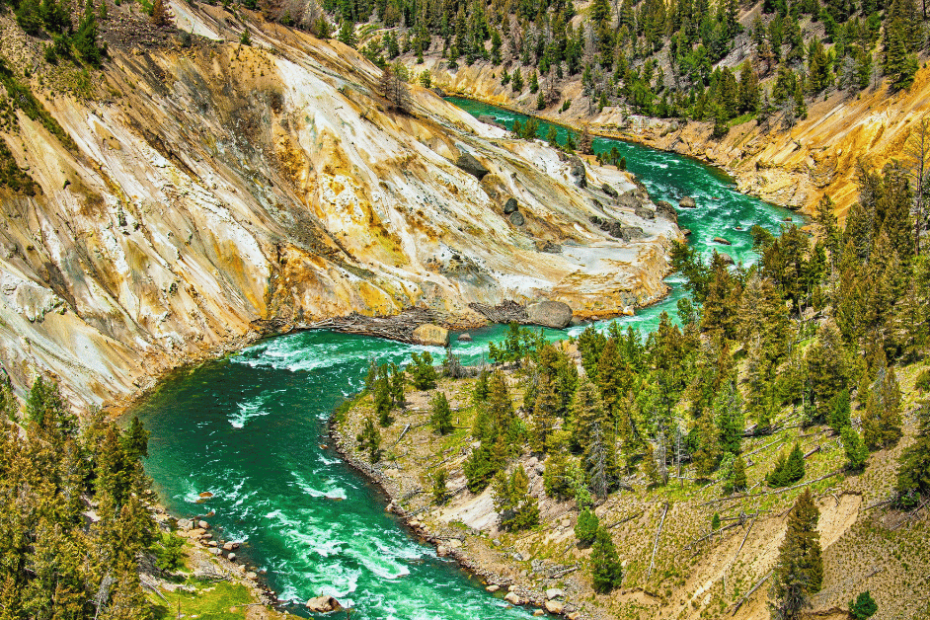Planning a trip to Yellowstone National Park but only have three days to explore? Don’t worry, you can still experience the best this iconic destination has to offer. From breathtaking geysers and vibrant hot springs to majestic wildlife and scenic vistas, Yellowstone packs a punch for any nature enthusiast.
Key Takeaways
- Must-See Attractions: Key Yellowstone attractions to prioritize include the Grand Canyon of the Yellowstone, Old Faithful, Lamar Valley, Mammoth Hot Springs, and Norris Geyser Basin. Each offers unique geothermal features, vibrant landscapes, and abundant wildlife.
- Optimal Accommodations: Choose from various accommodations like the historic Old Faithful Inn, the budget-friendly Grant Village Lodge, or the family-friendly Canyon Lodge & Cabins, depending on your preferences and budget.
- Dining Options: Enjoy diverse dining experiences ranging from quick meals at Old Faithful Lodge Cafeteria to gourmet dishes at Lake Yellowstone Hotel Dining Room, providing convenient and varied food choices.
- Best Time to Visit: Visit from late spring through early fall (May to September) for mild weather and accessible trails. Each season offers unique experiences, from spring wildlife viewing to stunning fall foliage.
- Transportation Tips: Renting a car is recommended for flexibility; choose from several nearby airports for convenient access. Consider eco-friendly travel options like hybrid rentals or cycling within the park.
- Packing Essentials: Prepare for diverse weather by packing layering clothes, sturdy hiking boots, and essentials like a reusable water bottle, first-aid kit, and binoculars for wildlife viewing.
Yellowstone Trip Overview
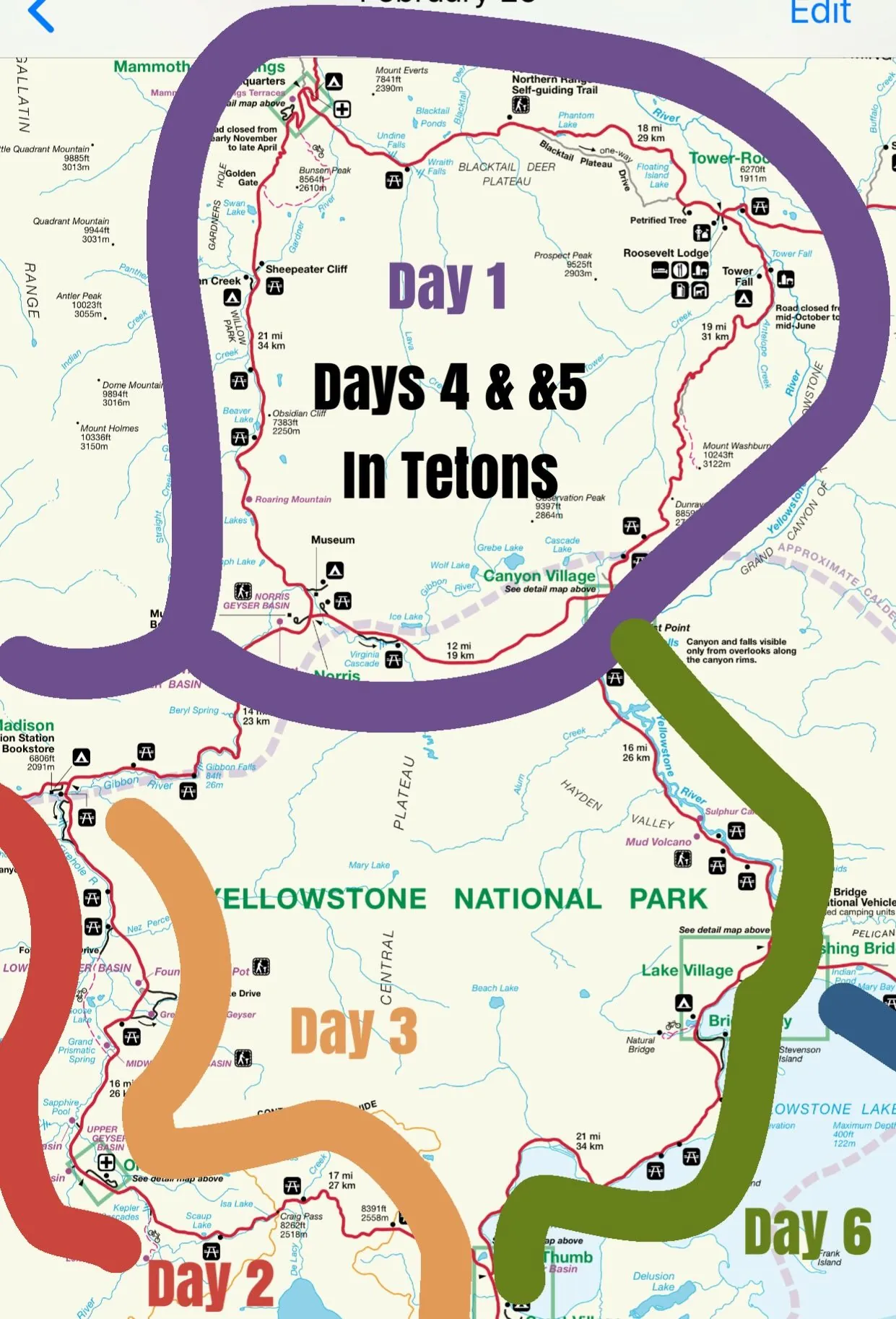
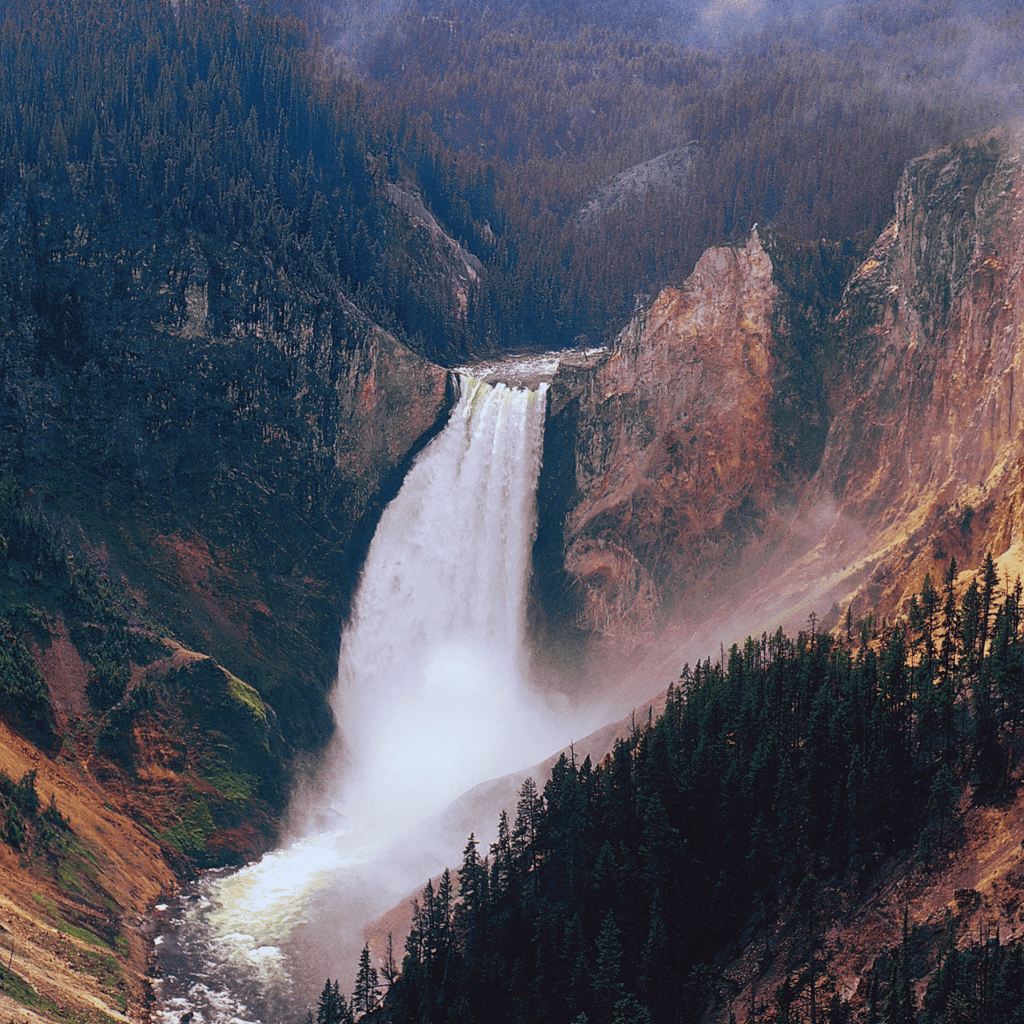
Captivating Intro with Unique Hook
Imagine standing at the edge of a sprawling canyon, the roar of cascading waterfalls filling your ears, or spotting a bison meandering through an open meadow as steam hisses from a nearby geyser. Yellowstone National Park isn’t just a destination—it’s a vibrant, natural symphony that promises an unforgettable adventure.
Brief Overview
Location: Straddling the states of Wyoming, Montana, and Idaho, Yellowstone is the epitome of untamed wilderness.
Climate: Expect varied temperatures, with summer highs reaching 70°F-80°F and winter plunging below freezing.
Best Time to Visit: Late spring through early fall (May to September) offers mild weather and accessible trails.
Top Attractions
- Grand Canyon of the Yellowstone: Marvel at the sheer cliffs and vibrant hues while hiking to Lookout Point, Red Rock Point, and the Brink of the Lower Falls.
- Old Faithful: Watch this iconic geyser erupt every 35-120 minutes, shooting boiling water high into the sky.
- Lamar Valley: Perfect for wildlife viewing, this area teems with bison, elk, and occasionally wolves.
- Mammoth Hot Springs: Admire terraced travertine formations that look like a frozen waterfall.
- Norris Geyser Basin: Home to Steamboat Geyser, it features a kaleidoscope of geothermal activity.
Hidden Gems
- Clear Lake Artist Point Loop: Enjoy solitude and stunning views of Clear Lake, geothermal features, and the Grand Canyon of the Yellowstone.
- Bechler region: Known as the “Cascade Corner” for its numerous waterfalls, it’s less crowded and perfect for explorers.
Accommodations
| Accommodation | Type | Location | Price Range per Night | Suitable For |
|---|---|---|---|---|
| Old Faithful Inn | Historic hotel | Old Faithful area | $150 – $500 | History buffs, luxury seekers |
| Canyon Lodge & Cabins | Modern lodge | Canyon Village | $200 – $300 | Families, groups |
| Grant Village Lodge | Standard rooms | Grant Village | $160 – $250 | Budget-conscious travelers |
| Mammoth Hot Springs Hotel & Cabins | Varied options | Mammoth area | $100 – $250 | Budget-conscious, nature lovers |
Dining Highlights
- Old Faithful Lodge Cafeteria: Offers quick, hearty meals with a view of Old Faithful.
- Lake Yellowstone Hotel Dining Room: Savor gourmet dishes in an iconic, elegant setting.
- Mammoth Terrace Grill: Enjoy casual fare with views of the breathtaking terraces.
- Roosevelt Lodge: Relish Western-style dishes in a rustic log cabin atmosphere.
Transportation & Practical Tips
- Getting Around: Renting a car is the best way to explore at your own pace. Consider an eco-friendly hybrid option.
- Entry Fees: $35 per vehicle for a 7-day pass; consider an annual pass if visiting other national parks.
- Seasonal Variations: Summer can be crowded; visit in spring or early fall for fewer people and vibrant landscapes.
- Sustainability Tips: Stay on marked trails, carry reusable water bottles, and follow Leave No Trace principles.
| Activity | Price Range | Typical Duration |
|---|---|---|
| Ranger-led tours | Free to $50 | 1-3 hours |
| Wildlife safari tours | $100 – $300 | 4-8 hours |
| Boat rentals at Yellowstone Lake | $35 – $70 per hour | 1-2 hours |
| Guided hiking adventures | $50 – $150 | 3-6 hours |
By planning your visit to Yellowstone with these vivid and practical insights, you’ll not only discover the park’s iconic sights but also its hidden treasures, making your adventure both memorable and unique.
Best Time to Visit Yellowstone National Park
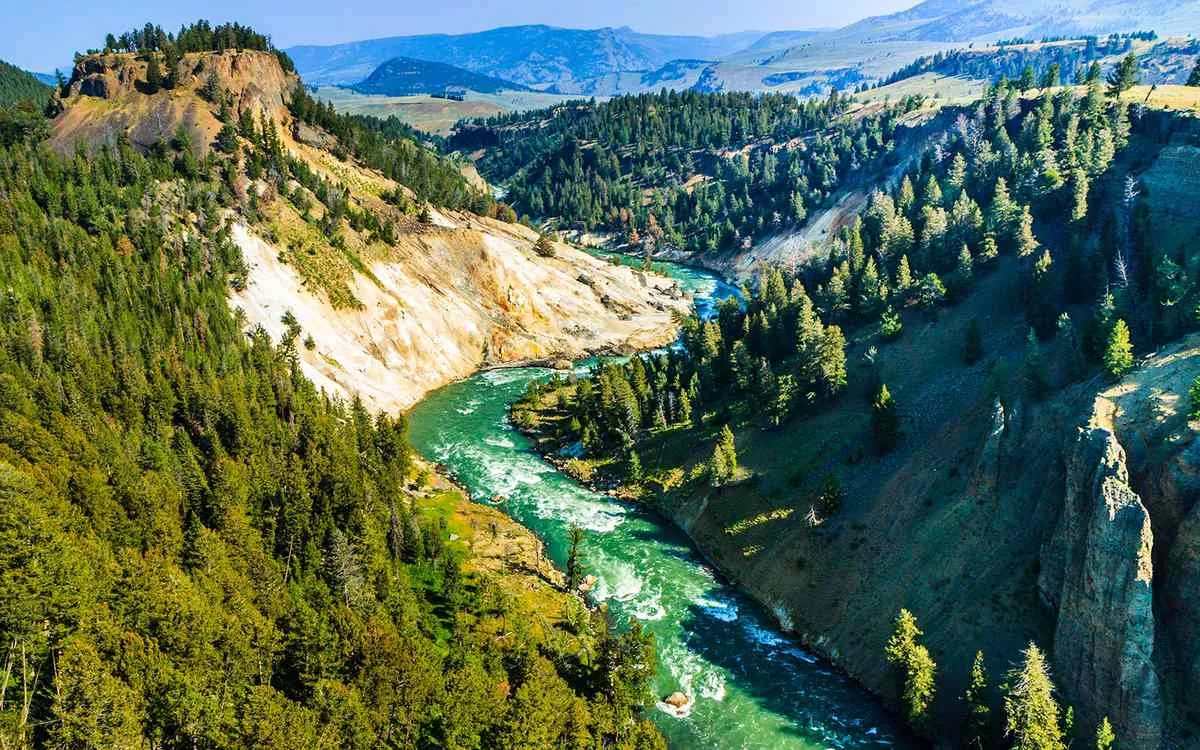
Choosing the best time to visit Yellowstone National Park can make all the difference in your experience. Each season offers unique highlights and opportunities for exploration. Here’s what you need to know to plan your trip seamlessly.
Spring (April to May)

- Weather: Spring is known as the “mud season.” Thawing snow makes roads, trails, and campgrounds muddy and icy. Temperatures range from 40°F to 60°F (7°C to 16°C).
- Crowds: You’ll find fewer visitors, making it a quieter time for your adventure.
- Activities:
- Wildlife viewing is excellent; you can spot baby bison, elk, and wolf pups.
- Bears start emerging from hibernation, and wildflowers begin to bloom.
- Note that many roads and facilities are still closed, which limits access to some areas.
Summer (June to August)
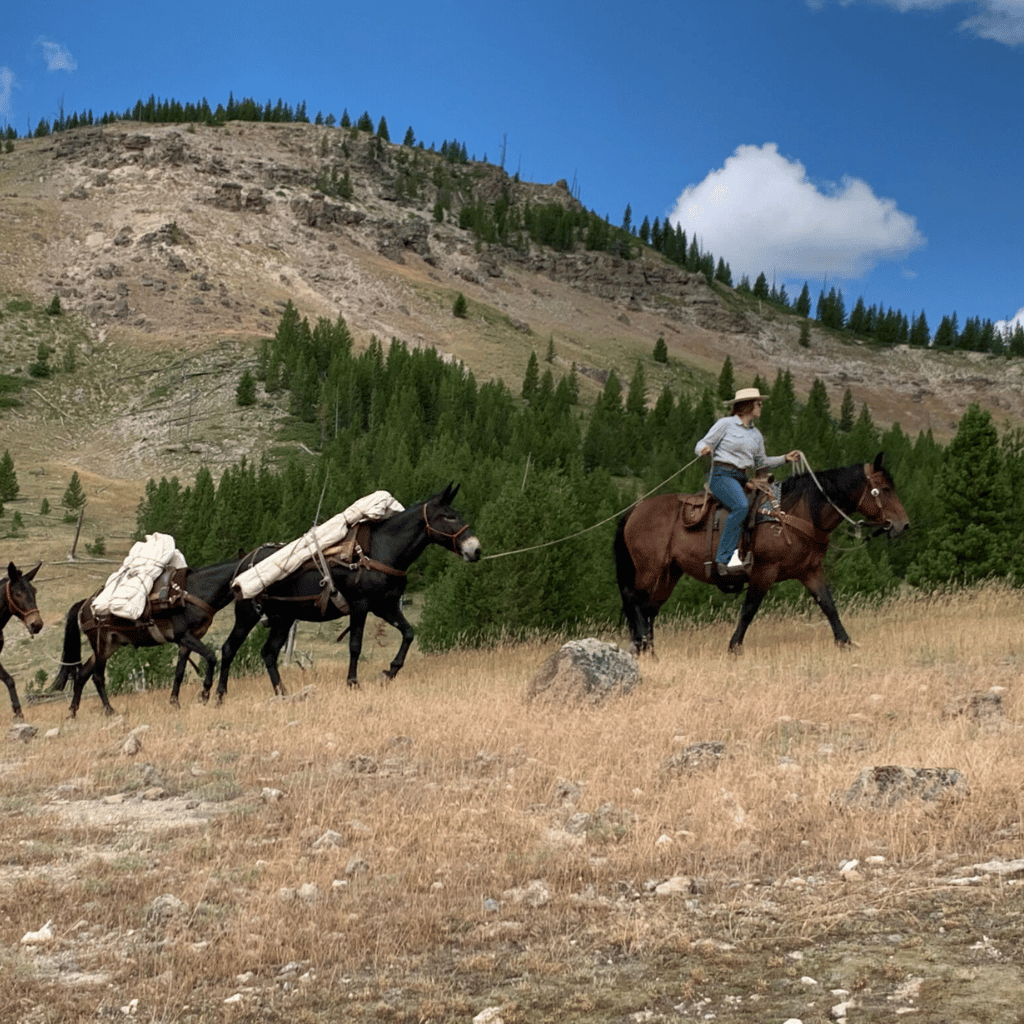
- Weather: Summer is the warmest season, with temperatures ranging from 70°F to 80°F (21°C to 27°C). Nights can be cooler.
- Crowds: This is peak tourist season, so expect larger crowds and busier attractions.
- Activities:
- All roads and facilities are open, offering full access to the park.
- Ranger-led programs and guided tours are available.
- Popular spots like Old Faithful and Grand Prismatic Spring are must-sees.
Fall (September to October)
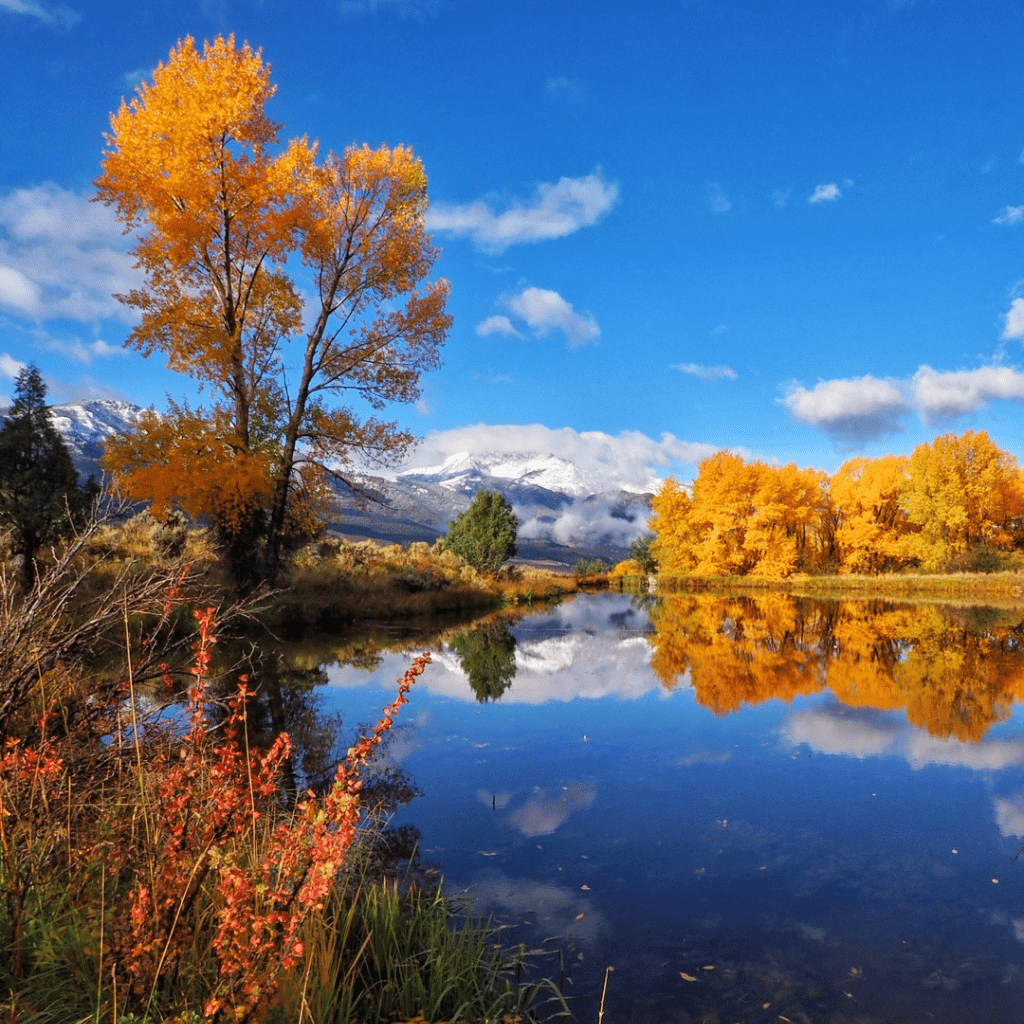
- Weather: Fall temperatures range from 30°F to 60°F (-1°C to 16°C). You may experience chilly mornings and evenings.
- Crowds: Visitor numbers decline after Labor Day, providing a more serene experience.
- Activities:
- This is a great season for hiking and photography with stunning fall foliage.
- Wildlife remains active, making it ideal for spotting elk and bears.
- Some facilities start closing by mid-October, so plan accordingly.
Winter (November to March)
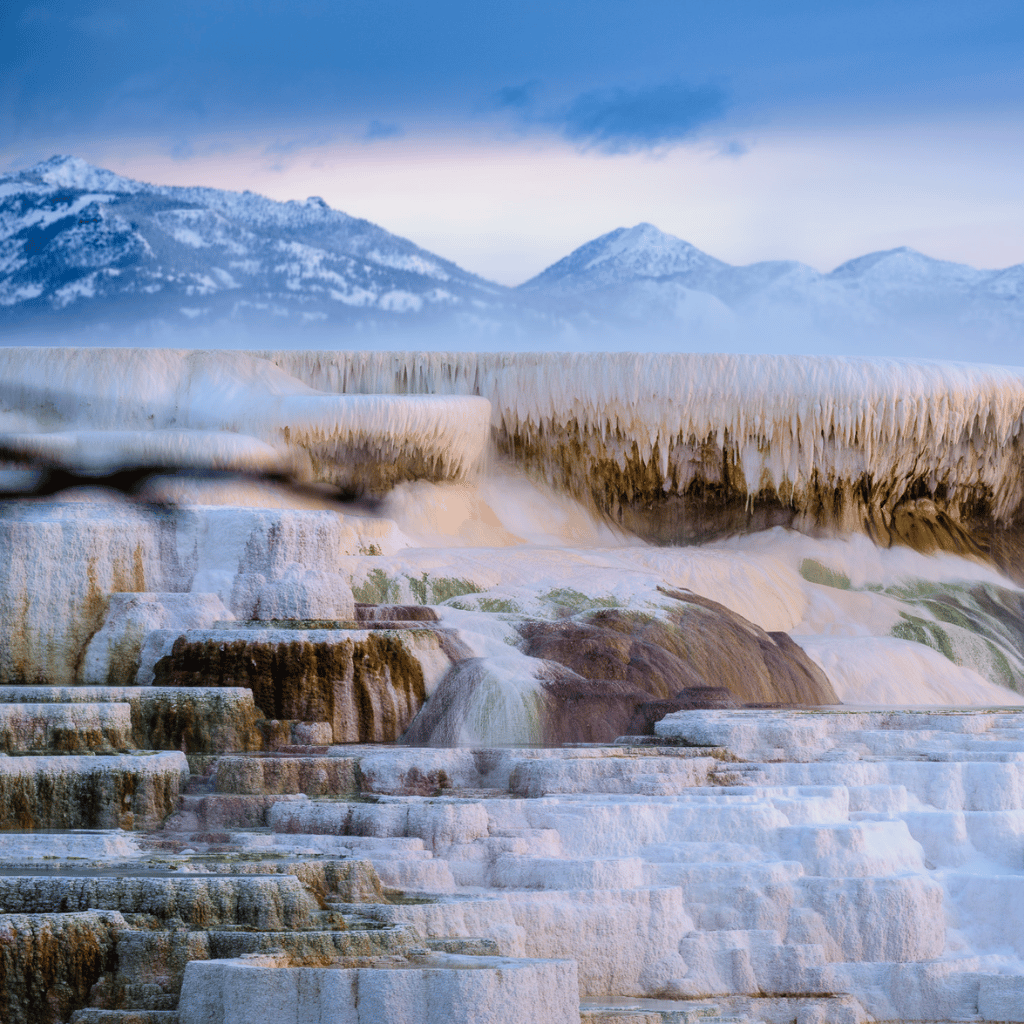
- Weather: Winter is cold and snowy, with temperatures often below freezing.
- Crowds: Few visitors brave the cold, giving you a more intimate experience.
- Activities:
- Snowshoeing, cross-country skiing, and snowmobile tours create unique outdoor adventures.
- Roads close to regular traffic but are open to guided snowmobile tours and snowcoaches.
- The park’s geothermal features stand out against the snowy backdrop.
- Balanced Experience: For a balanced experience with access to most areas and manageable crowds, late June to early September is ideal. During this period, the weather is pleasant, and all attractions are accessible.
- Specific Interests: Consider your specific interests like wildlife viewing, hiking, or winter sports, and pick a season that aligns with those activities. Each season offers its own set of unique experiences and natural beauty.
By carefully selecting the best time to visit Yellowstone based on your preferences, you can make the most out of your three-day trip in this iconic park.
How to Get to Yellowstone National Park
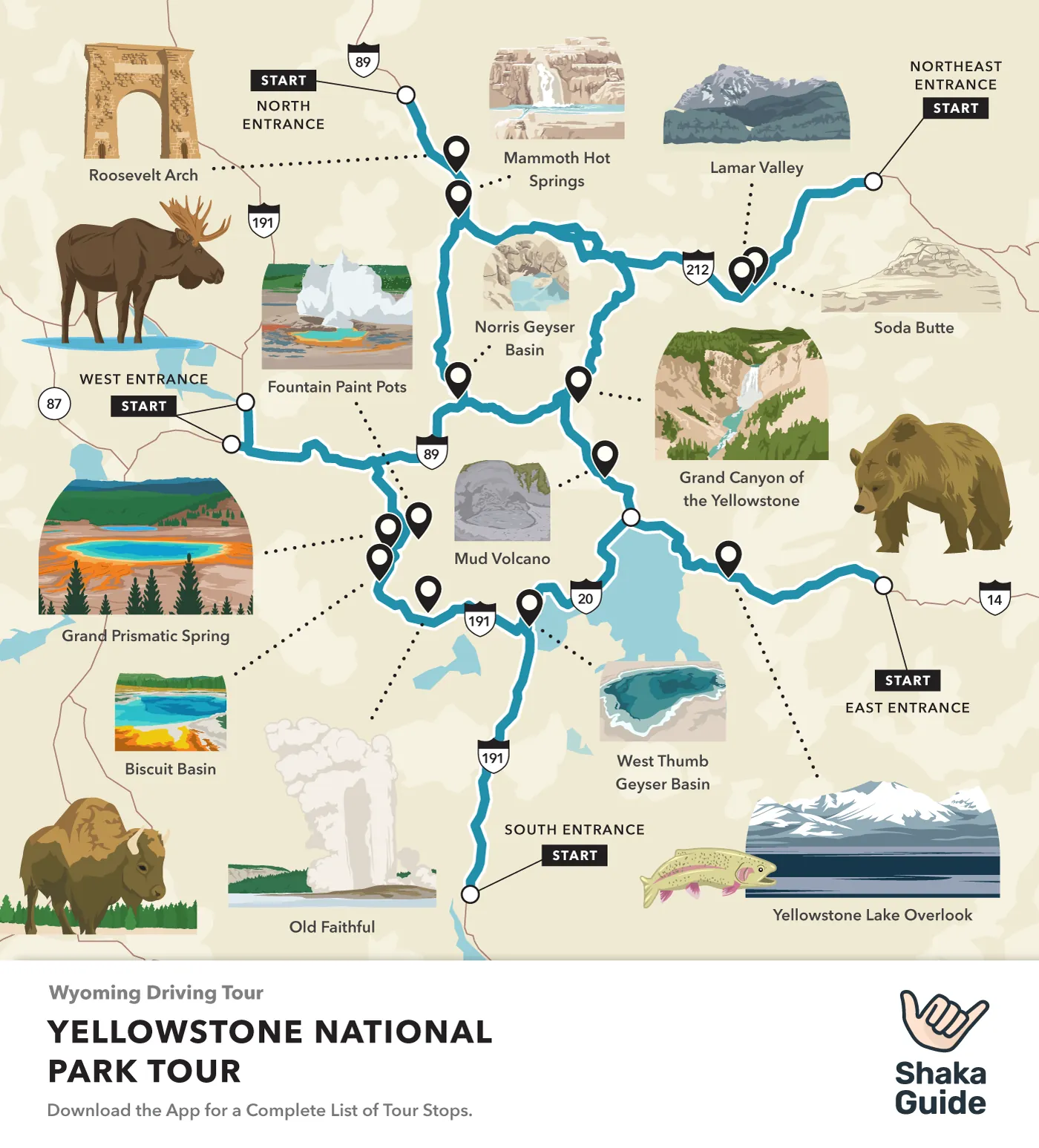
Planning a trip to Yellowstone National Park is exciting, but first, you need to figure out how to get there and navigate the expansive park effectively.
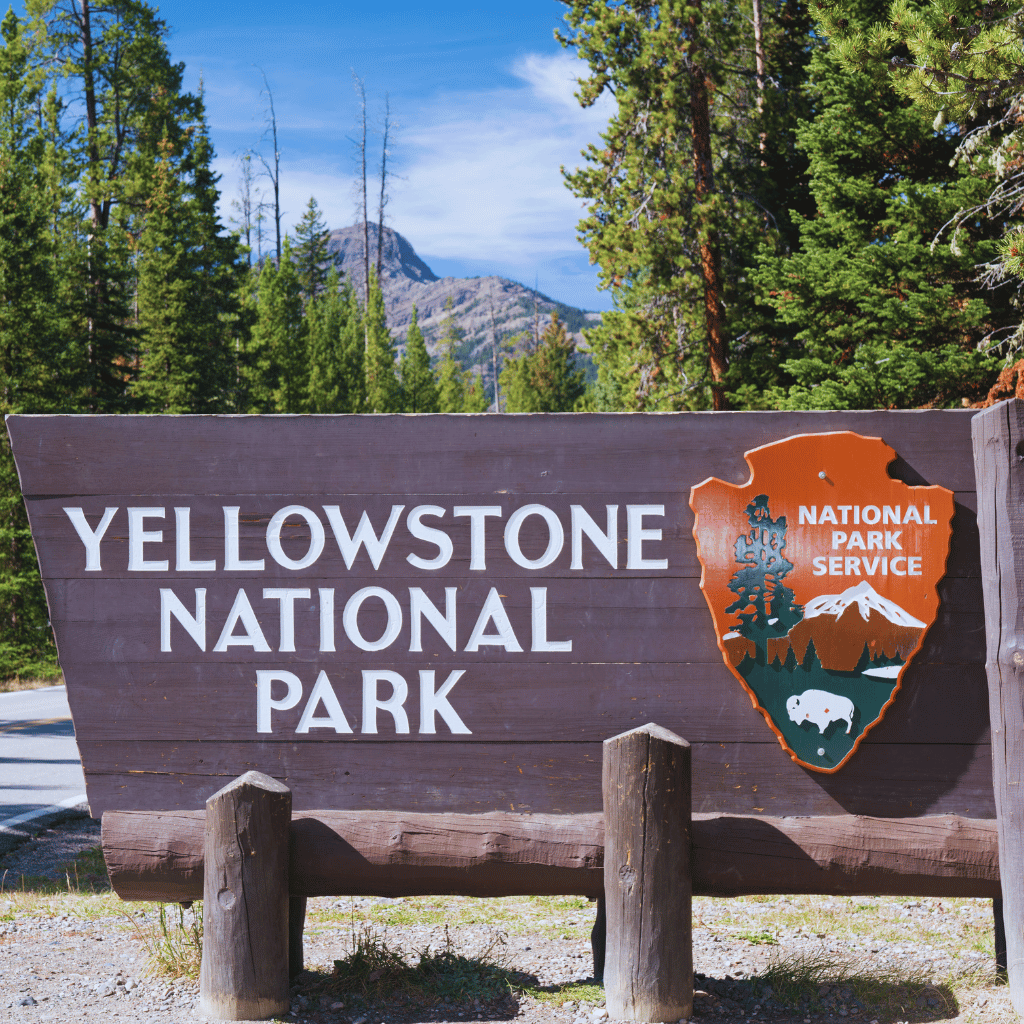
Yellowstone National Park Entrances
Yellowstone boasts several entry points, each offering a unique route through stunning landscapes.
- North Entrance: Located near Gardiner, Montana, this entrance is the only one open year-round. It’s perfect if you’re planning a winter visit or coming from northern states.
- Northeast Entrance: Found near Cooke City, Montana, this entrance lets you explore less crowded areas and offers stunning scenic drives.
- East Entrance: This entrance near Cody, Wyoming, is ideal for those interested in exploring the history and culture of the Wild West along the way.
- South Entrance: Close to Grand Teton National Park and Jackson, Wyoming, this entry point is convenient if you’re planning a combined visit to both parks.
- West Entrance: Near West Yellowstone, Montana, this is one of the most popular entry points, given its proximity to various accommodations and services in the town.
- Northwest Entrance: Also near West Yellowstone, Montana, this entrance provides another convenient access point to the park’s treasures.
Air Travel
The quickest way to reach Yellowstone is by flying. Three main airports serve the area:
- Bozeman Yellowstone International Airport (BZN): Located in Montana, offers car rentals and shuttles to the park.
- Jackson Hole Airport (JAC): Situated in Wyoming, provides stunning views on arrival, along with transportation options to Yellowstone.
- Idaho Falls Regional Airport (IDA): In Idaho, another feasible option with several routes to the park.
Driving
Driving can be a scenic way to enter Yellowstone. Pick the entrance that best aligns with your travel itinerary and interests. Consider the season and access concerns, particularly if you’re visiting during winter when only the North Entrance remains open.
Getting Around Yellowstone National Park
Once inside, you’ll need reliable transportation to explore Yellowstone’s vast areas.
- Car Rentals: Available at major airports; essential for flexibility and time management.
- Shuttle Services: Operate from nearby towns and some park locations, convenient if you prefer not to drive.
- Cycling: Yellowstone offers several bike paths, great for the eco-conscious traveler looking to explore at a slower pace.
- Public Transit: Limited but available in certain areas; check schedules and availability in advance.
Whether you’re driving from one of the six main entrances or taking a shuttle from a nearby airport, planning your route and transportation ensures you’ll have a smooth and enjoyable journey exploring Yellowstone’s incredible landscapes.
Where to Stay in Yellowstone National Park
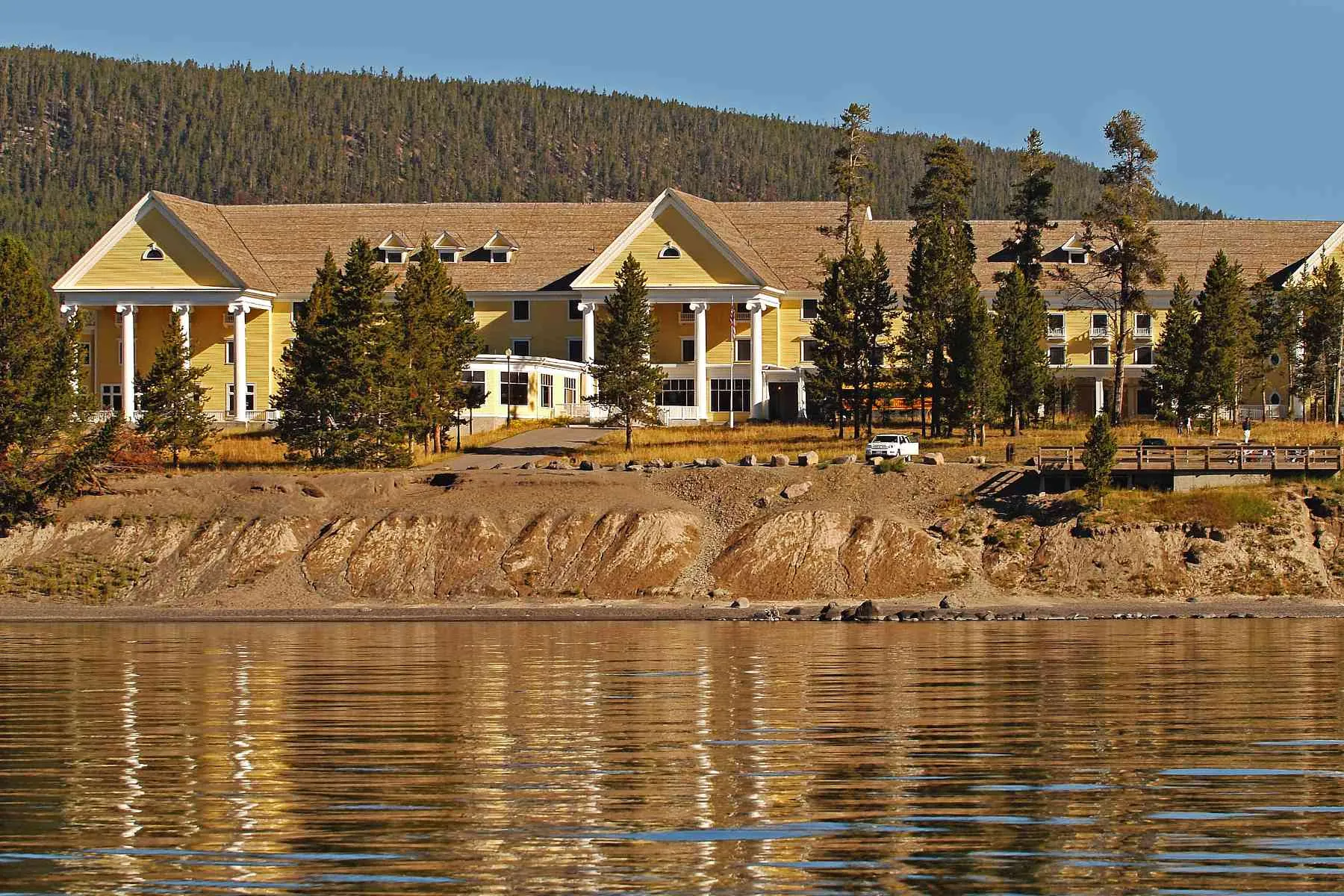
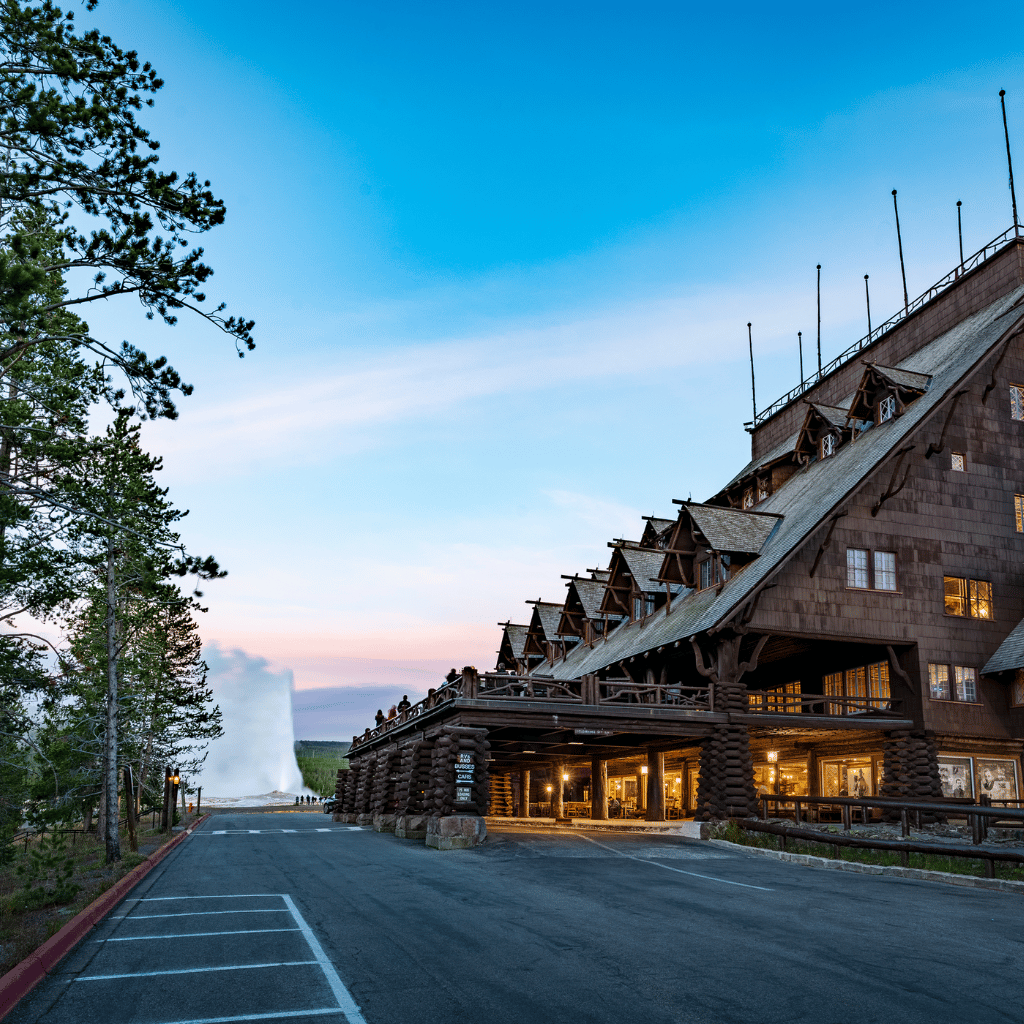
When planning your three-day adventure in Yellowstone, choosing the right place to stay can make or break your trip. Staying inside or outside the park each has its perks, and this guide will help you find the best lodging options to suit your needs.
Lodging Inside the Park
Yellowstone National Park has several lodging options managed by the Yellowstone National Park Lodges. These accommodations place you close to the park’s iconic sites, reducing travel time and maximizing your experience.
- Old Faithful Inn and Lodges: Nestled near the famous Old Faithful geyser, this historic inn immerses you in the heart of Yellowstone’s geothermal wonders. Imagine stepping outside to witness the grandeur of Old Faithful, explore the vivid hues of the Grand Prismatic Spring, and stroll through the Upper Geyser Basin. Staying here eliminates long drives, letting you soak in the park’s dynamic geothermal areas more leisurely.
- Mammoth Hot Springs Hotel: Strategically located in the northern region of the park, this hotel is close to Mammoth Hot Springs, known for its terraces of steaming hot waters shaping unique travertine formations. It’s also near Lamar Valley, often called America’s Serengeti for its abundant wildlife, and the Boiling River, where you can enjoy a warm soak in a natural hot spring. This lodging choice is perfect if you’re interested in exploring Yellowstone’s northern attractions and enjoying some tranquil moments away from the more crowded areas.
Yellowstone Itinerary: Day 1
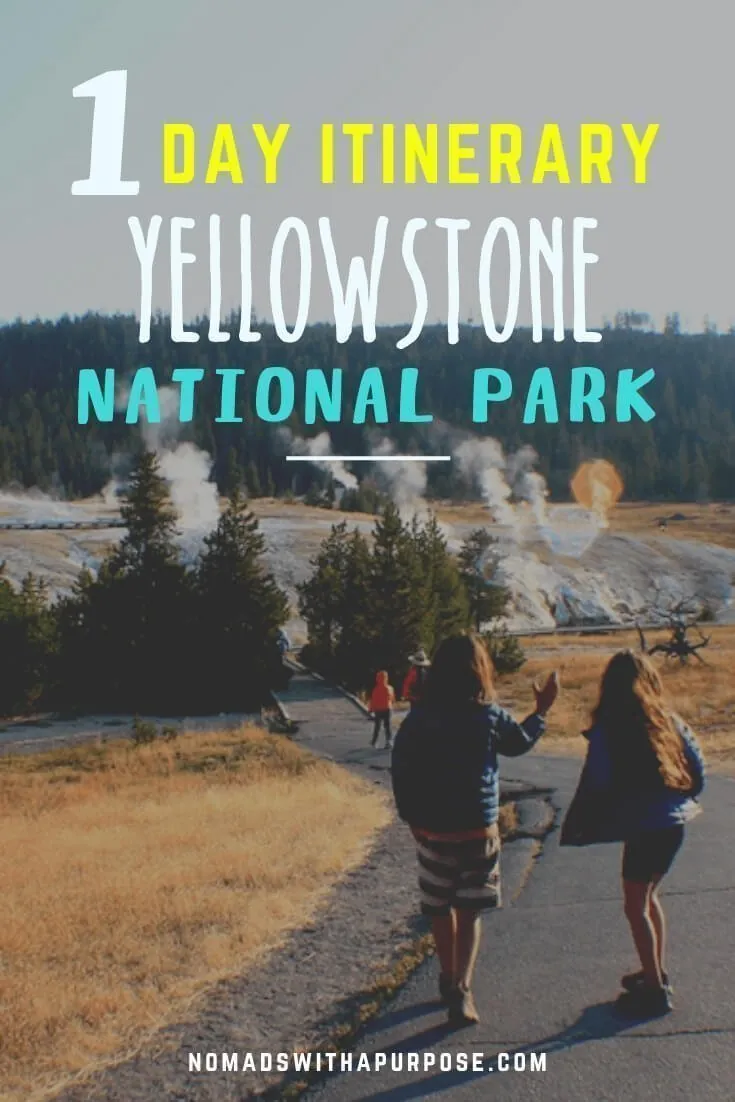
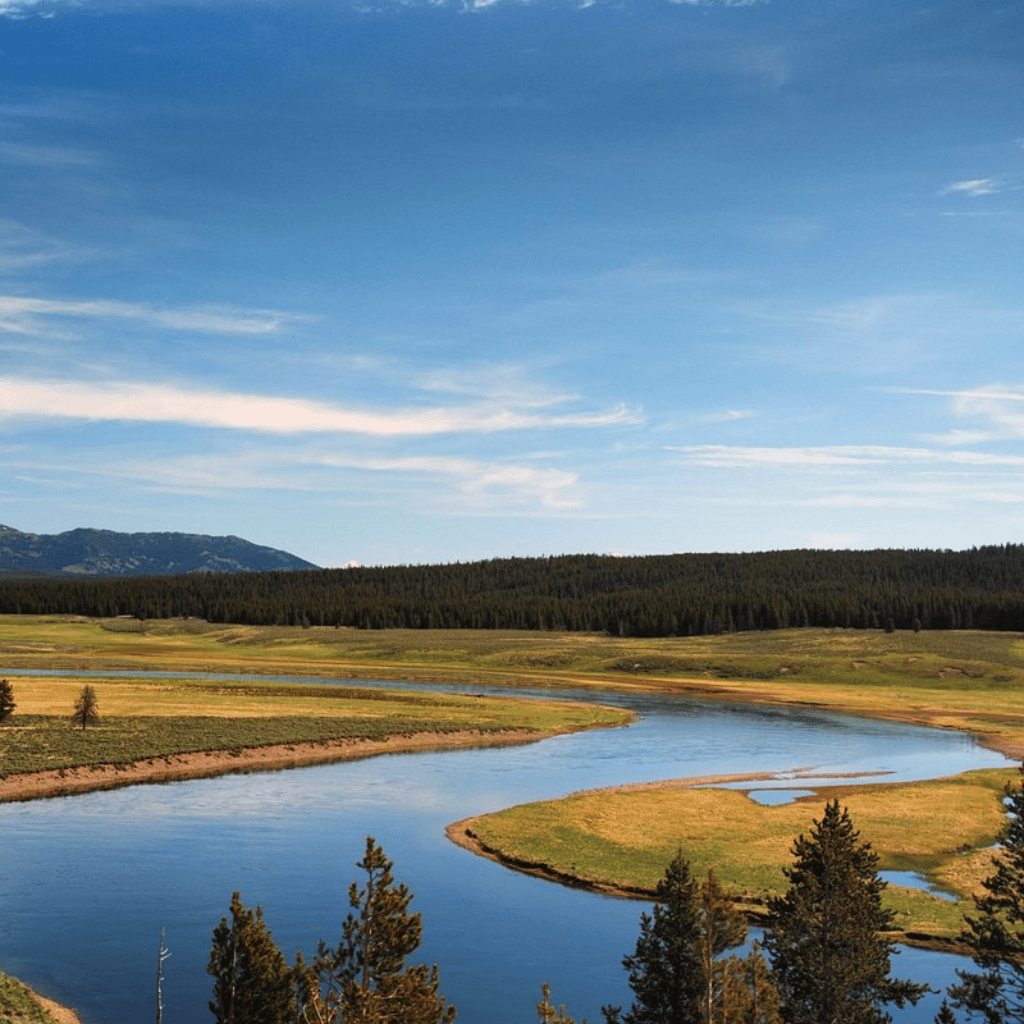
Stop 1: Lamar Valley
Lamar Valley, often called the “Serengeti of North America,” is your first stop. You’ll encounter a variety of wildlife, from bison to wolves, against a backdrop of stunning landscapes. Get there early for the best chances to spot animals in action.
Stop 2: Undine Falls
On your way back from Lamar Valley, make a quick stop at Undine Falls. This picturesque waterfall is easily accessible from the road, offering a perfect scenery break. Snap some photos and take in the peaceful beauty of this natural highlight.
Stop 3: Mammoth Hot Springs
Next, visit Mammoth Hot Springs, known for its unique limestone travertine formations that resemble a cave-like structure. While you can’t swim in these hot springs, you’ll be amazed by the otherworldly terraces and colors.
Stop 4: Boiling River
A hidden gem in Yellowstone, Boiling River is where hot springs mix with the cold waters of the Gardner River. Bring your swimwear for a relaxing dip in nature’s hot tub. It’s both a soothing and exhilarating experience.
Stop 5: Norris Geyser Basin
Finish your day at Norris Geyser Basin, the park’s hottest and most active geothermal area. Walk the boardwalks to witness dynamic geysers and vibrant hot springs. Steamboat Geyser, the tallest active geyser in the world, can erupt unexpectedly, making every visit unique.
Yellowstone Itinerary: Day 2
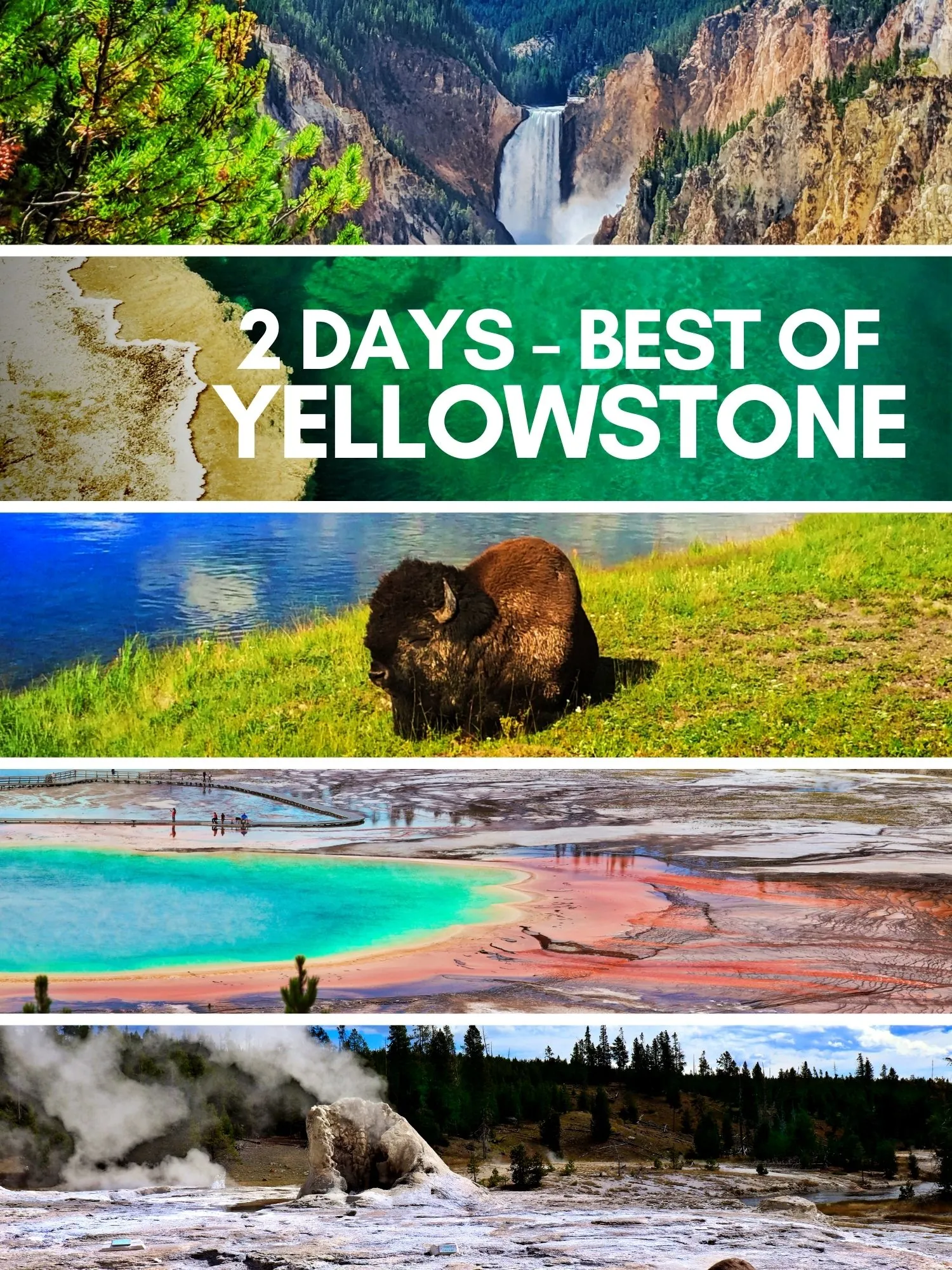
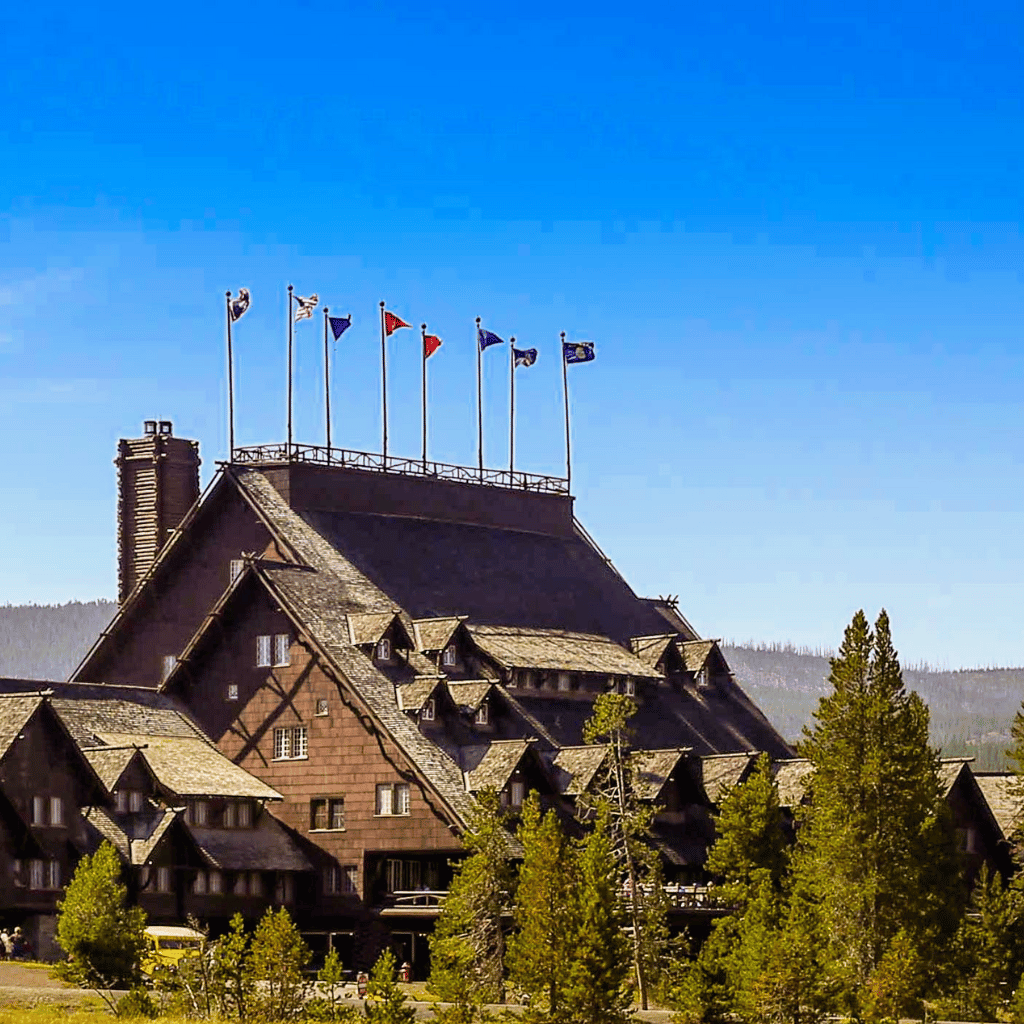
Day 2 of your Yellowstone adventure promises thrilling geysers and vibrant hot springs.
Stop 1: Old Faithful
- Location: Southwest part of the park, accessible via Madison Junction.
- Highlights: Old Faithful isn’t just a geyser; it’s an experience. Erupting every 60-110 minutes, it can shoot water up to 140 feet into the air. Use the Yellowstone National Park app to track these eruptions and plan your visit. Watching Old Faithful erupt is like witnessing nature’s clockwork.
- Additional Activities: While you’re here, explore the Old Faithful Visitor Center to learn about the park’s geothermal features. Stroll through the Tribal Heritage Center to understand the indigenous ties to the land. Take a walk on the Geyser Loop Trail, where more geysers await. Don’t miss the historic Old Faithful Lodge nearby, offering a cozy stop with a gift shop and snack bar.
Stop 2: Upper Geyser Basin
- Location: Just a short walk from Old Faithful.
- Highlights: The Upper Geyser Basin hosts the highest concentration of geysers in the world. Keep your camera ready for the regularly erupting geysers like Castle, Grand, and Riverside, along with colorful hot springs. Each has its unique pattern, so check the eruptive schedules posted.
- Additional Activities: Enjoy a leisurely walk on the boardwalks, offering safe and close-up views of the geothermal wonders. Don’t forget to visit Morning Glory Pool, named for its beautiful blue color, reminiscent of the morning glory flower. This area is a photographer’s dream!
- Location: Midway Geyser Basin, north of Upper Geyser Basin.
- Highlights: Known for its striking rainbow colors, Grand Prismatic Spring is Yellowstone’s largest hot spring. The vibrant hues result from heat-loving bacteria. The spring’s depth and size create an otherworldly world, making it a must-see.
- Additional Activities: Take the Fairy Falls Trail for an elevated view; it’s a short hike that rewards you with breathtaking perspectives. Boardwalks around the Midway Geyser Basin allow you to get up close without disturbing the delicate environment. Consider visiting during midday when the sunlight enhances the spring’s colors.
Whether you’re witnessing Old Faithful’s eruptions, exploring the diverse geysers of the Upper Geyser Basin, or marveling at the kaleidoscopic Grand Prismatic Spring, Day 2 at Yellowstone offers unforgettable geothermal wonders that highlight the park’s unique beauty.
Stop 4: Firehole River
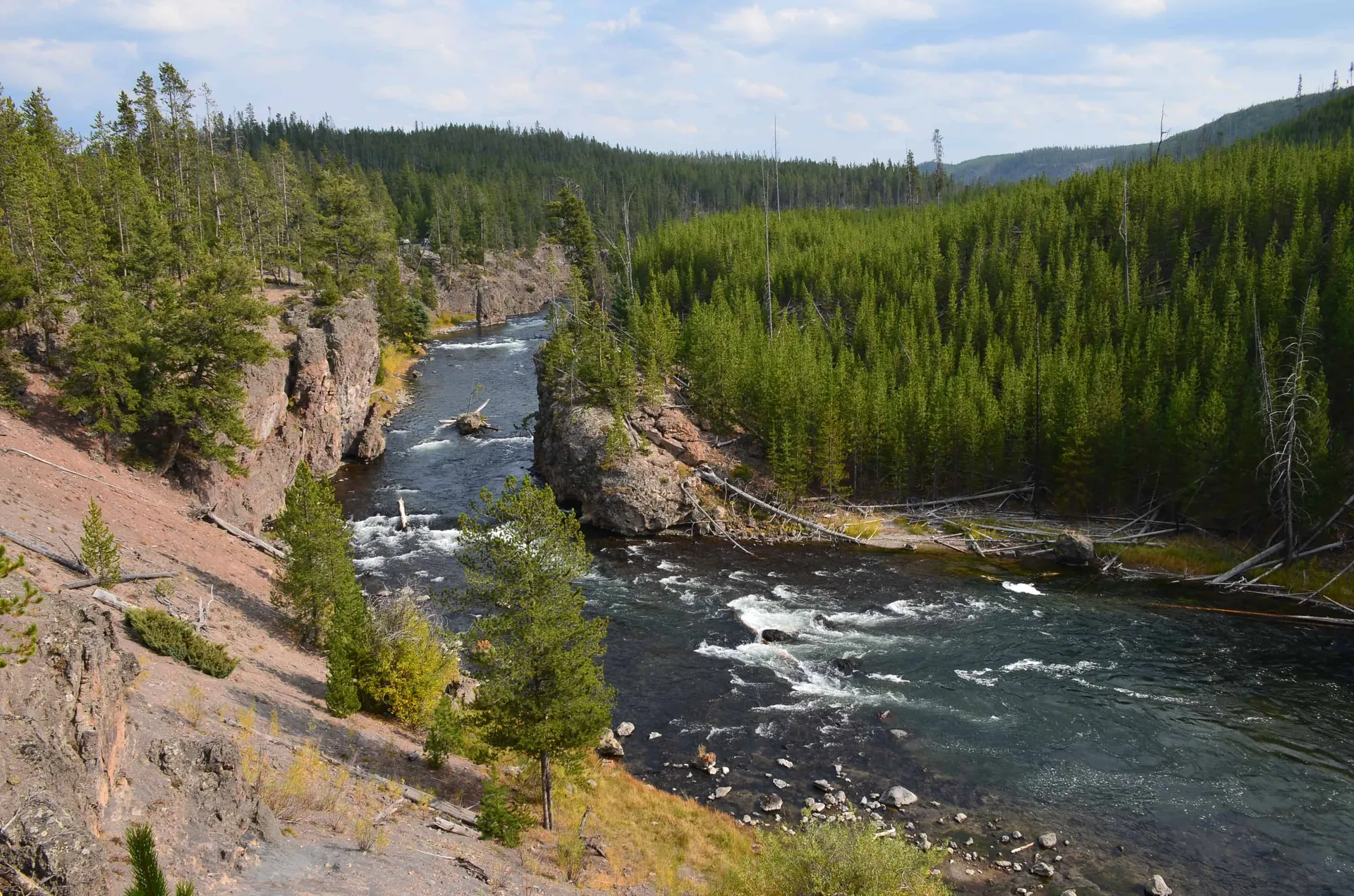
Jump into the pristine beauty of Firehole River, a Yellowstone gem that offers both scenic views and adventure. This serene river carves through the park’s heart, presenting myriad opportunities for exploration and relaxation.
A Quick Stop at Kepler Cascades
Start your journey at Kepler Cascades. These falls, where the Firehole River tumbles down roughly 150 feet, are easily accessible from the road. You’ll find a convenient pullout area where you can safely park and snap some stunning photos.
Firehole Falls
Don’t miss the Firehole Falls. This majestic cascade is about 40 feet high and offers a picturesque view of the river’s rapids. There’s a short trail that gets you closer to the falls, perfect for those Insta-worthy shots.
Firehole River Swimming Area
When the weather’s warm, head to the Firehole River Swimming Area. It’s one of the few places in Yellowstone where swimming is allowed. The river’s geothermally heated waters create a pleasant swimming experience, making it a family-friendly spot you’d definitely enjoy.
Fly Fishing
If you’re into fishing, Firehole River is a prime spot for fly fishing. Home to rainbow and brown trout, this catch-and-release fishing area is perfect for both novice and seasoned anglers. Remember to get your Yellowstone fishing permit beforehand.
Wildlife Watching
Keep your eyes peeled for the diverse wildlife around Firehole River. Bison, elk, and sometimes even bears frequent the area. Carry your binoculars for a chance to witness these magnificent creatures in their natural habitat.
Best Time to Visit
For optimal conditions, visit Firehole River during summer or early fall. The warmer weather makes outdoor activities like swimming and fishing more enjoyable, and the wildlife is active. Late spring can also be a great time, but be prepared for cooler temperatures and potentially higher river flows due to snowmelt.
Sustainability Tips
When exploring Firehole River, follow Leave No Trace principles. Pack out all trash, stick to designated trails, and respect wildlife by maintaining a safe distance. Your eco-friendly practices ensure the river’s beauty remains unspoiled for future visitors.
| Feature | Highlight |
|---|---|
| Kepler Cascades | 150-foot waterfall, easy roadside access |
| Firehole Falls | 40-foot waterfall, short trail for close views |
| Swimming Area | Geothermally heated, family-friendly |
| Fly Fishing | Rainbow and brown trout, catch-and-release |
| Best Time to Visit | Summer, early fall |
| Wildlife | Bison, elk, occasional bears |
Firehole River encapsulates Yellowstone’s rugged charm. Its waterfalls, wildlife, and outdoor activities create an enriching experience for every traveler. Make sure to include this stop on your itinerary for a perfect blend of adventure and relaxation.
Yellowstone Itinerary: Day 3
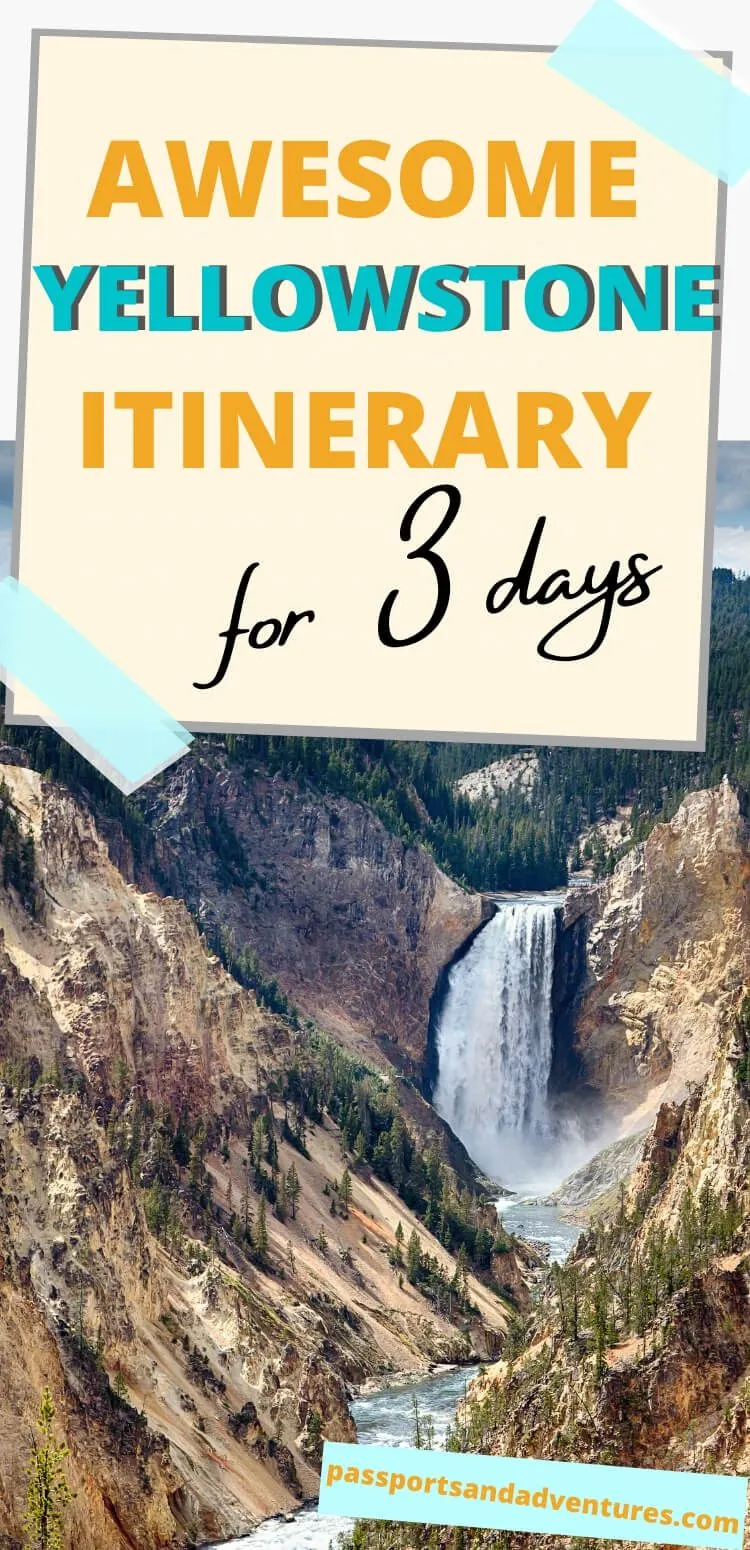
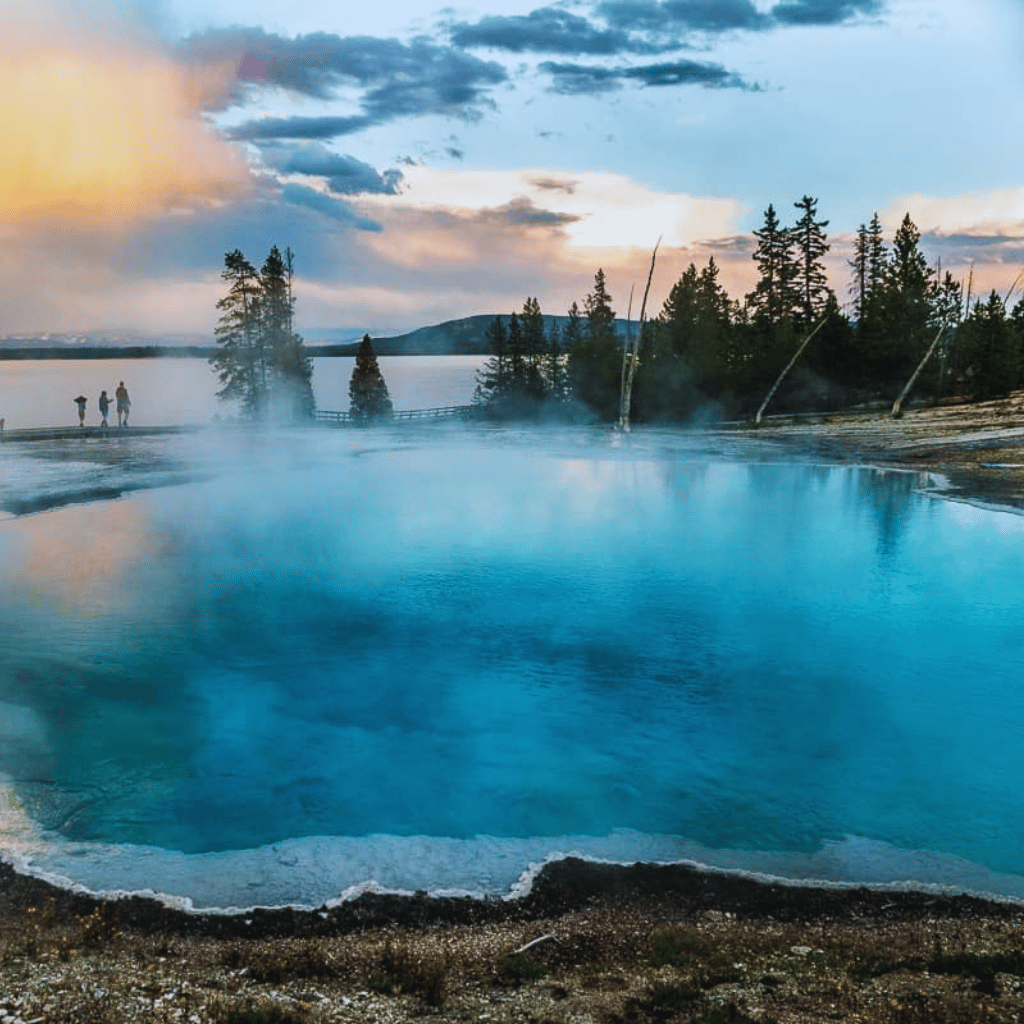
Day 3 of your Yellowstone adventure promises excitement and beauty with a mix of geothermal features, stunning lakes, and expansive valleys.
Stop 1: West Thumb Geyser Basin
Start your morning at the West Thumb Geyser Basin. This spot, on the shores of Yellowstone Lake, offers a unique blend of geothermal wonders and scenic beauty. Arriving early rewards you with breathtaking sunrise views over the lake. The boardwalks provide easy access to see geysers, hot springs, and fumaroles, making it perfect for a leisurely morning walk while enjoying the natural surroundings.
Stop 2: Yellowstone Lake
Yellowstone Lake, the largest high-elevation lake in North America, invites you for an unforgettable experience. With its cold, sapphire-blue waters hovering around 41°F year-round, swimming isn’t recommended. But, you can rent a kayak or a boat to explore this massive lake. The serene waters provide a peaceful contrast to the geothermal activity seen earlier, giving you a different, tranquil perspective of the park.
Stop 3: Grand Canyon of Yellowstone
Next, head to the Grand Canyon of Yellowstone. This iconic natural wonder spans approximately 20 miles and offers some of the most stunning views in the park. Visit viewpoints like Artist Point and Inspiration Point for breathtaking vistas of the canyon and the powerful Lower and Upper Falls. These spots offer excellent photo opportunities, capturing the vibrant colors and dramatic cliffs that define the canyon.
Stop 4: Hayden Valley
End your day at Hayden Valley, a prime location for wildlife watching. Known for its lush landscapes and wide meadows, Hayden Valley is a hotspot for viewing bison, elk, and occasionally grizzly bears. Visiting late in the afternoon increases your chances of spotting these majestic animals. Bring binoculars and a camera to capture the stunning scenery and wildlife as you unwind in this serene setting.
This detailed itinerary ensures you experience a variety of Yellowstone’s natural wonders, making the most of your final day in the park.
What to Pack for Your 3 Days in Yellowstone
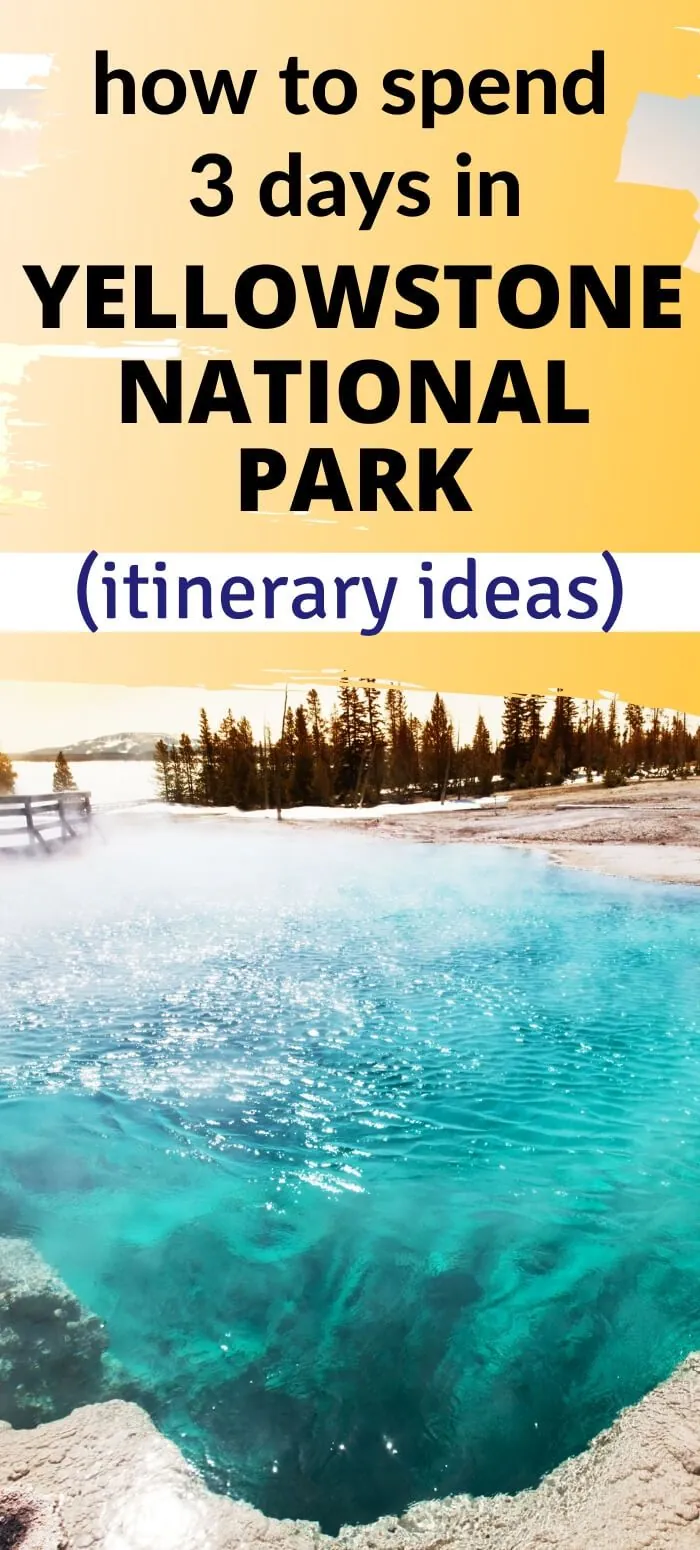
Packing for a trip to Yellowstone can make or break your experience. Due to its varying climate and vast landscapes, being prepared is essential. Here’s what you need:
Layering Basics
Pack layers of clothing to adapt to Yellowstone’s unpredictable weather. Think lightweight base layers and mid-layers you can add or remove as temperatures change. Yellowstone can have chilly mornings, warm afternoons, and cool evenings, even in summer.
Daily Wear
Bring lightweight, breathable clothing such as t-shirts, tank tops, and long-sleeved shirts for warmer parts of the day. Opt for moisture-wicking fabrics to stay comfortable during hikes. Include a few pairs of comfortable pants or shorts.
Cold Weather Additions
Even in summer, the evenings can be cool, so pack light jackets, sweaters, or a fleece. In colder months, add warmer layers like insulated jackets, hats, and gloves. This ensures you’re comfortable during early mornings and evenings.
Footwear
Sturdy hiking boots or shoes are essential for exploring Yellowstone’s trails and uneven terrain. Make sure they’re broken in to avoid blisters. Also pack a pair of casual shoes for relaxing at your accommodations.
Accessories
Don’t forget essentials like a wide-brimmed hat, sunglasses, and high-quality sunscreen. A durable backpack is handy for day trips. Binoculars are crucial for spotting wildlife, and a camera to capture Yellowstone’s stunning landscapes.
Gear
Pack a reusable water bottle or hydration system as clean water is crucial. A headlamp or flashlight is helpful for nighttime activities or power outages. A portable phone charger keeps your devices powered on long days out.
Food and Hydration
Bring non-perishable snacks like trail mix, granola bars, and dried fruit. These keep you energized during hikes. Always carry enough water; hydration is key, especially at higher altitudes. A small cooler can store perishables if you plan picnics in the park.
Important Tips for Your Yellowstone Trip
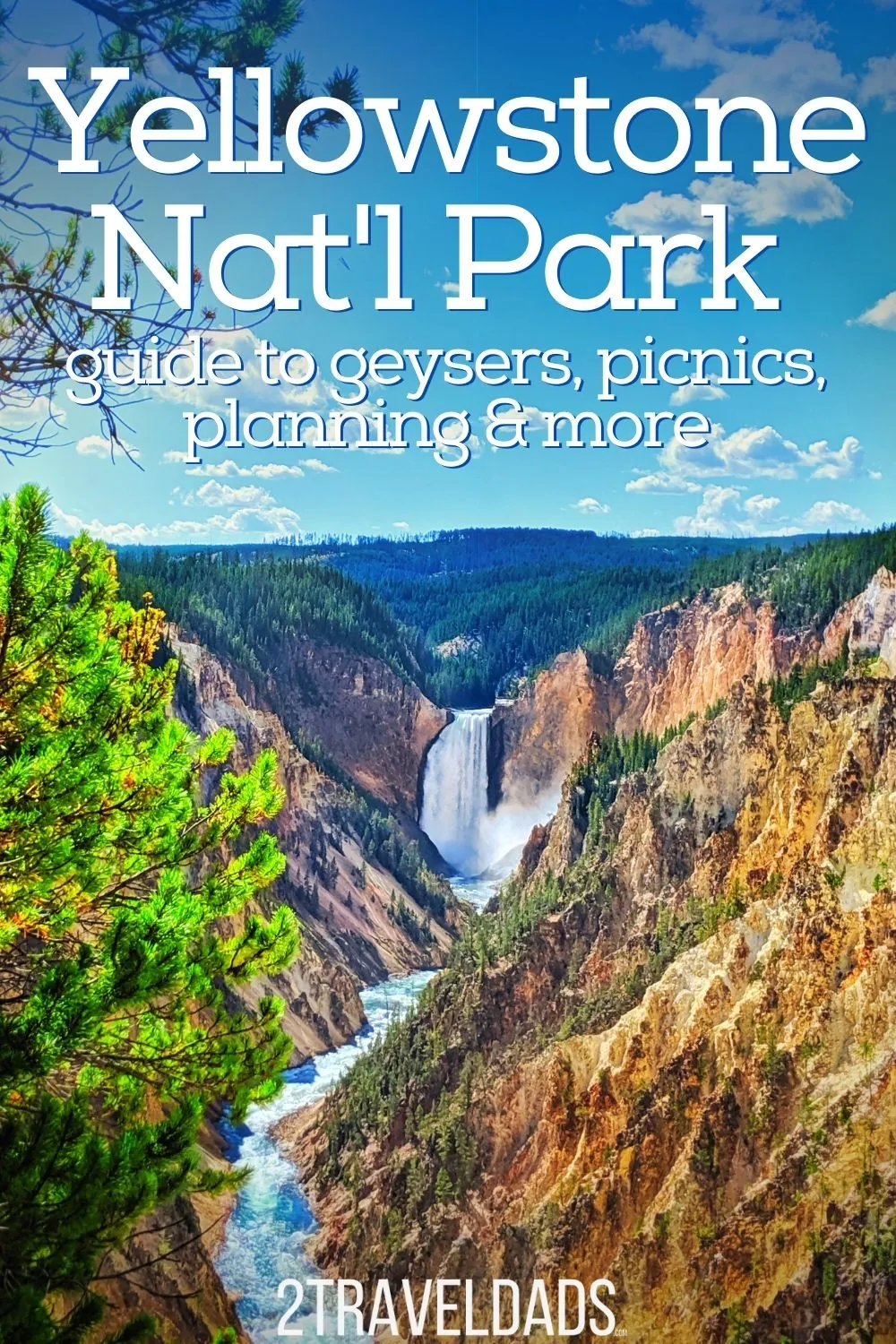
To make the most of your three-day adventure in Yellowstone prioritize your must-see attractions and plan your days accordingly. Remember to book your accommodations well in advance especially if you prefer staying inside the park. Pack layers to adapt to Yellowstone’s unpredictable weather and bring essential gear like sturdy footwear and a reusable water bottle.
Respect wildlife by maintaining a safe distance and follow all park guidelines to ensure a safe and enjoyable experience. Use the park’s various transportation options to explore efficiently and consider visiting during late June to early September for the best weather and accessibility. With these tips you’ll be well-prepared to enjoy the breathtaking beauty and diverse experiences Yellowstone has to offer.
Frequently Asked Questions
Where is Yellowstone National Park located?
Yellowstone National Park spans across three states: Wyoming, Montana, and Idaho. The majority of the park’s area is located in Wyoming.
What are the must-visit attractions in Yellowstone?
Key attractions include the Grand Canyon of the Yellowstone, Old Faithful geyser, Lamar Valley, Mammoth Hot Springs, Norris Geyser Basin, and the Grand Prismatic Spring. These spots offer a mix of geological wonders and diverse wildlife.
What is the best time to visit Yellowstone?
Late June to early September is the best time to visit due to pleasant weather and full access to attractions. Each season has its unique highlights: spring for fewer crowds and wildlife, summer for peak accessibility, fall for foliage, and winter for snow sports.
How can I get to Yellowstone National Park?
You can fly into Bozeman Yellowstone International Airport, Jackson Hole Airport, or Idaho Falls Regional Airport. Driving to the park’s various entrances is also an option, with the North Entrance open year-round.
What are the accommodation options in Yellowstone?
Accommodations range from historic hotels like the Old Faithful Inn to budget-friendly lodges. Inside the park, options include the Mammoth Hot Springs Hotel for those seeking a tranquil experience and proximity to northern attractions.
Is it necessary to book accommodation in advance?
Yes, especially during the peak summer season. Booking well in advance ensures you secure a spot in the popular lodges and hotels inside the park.
How many days should I spend in Yellowstone?
To fully experience Yellowstone, a minimum of three days is recommended. This allows ample time to see major sights and hidden gems without rushing.
What transportation options are available in Yellowstone?
Visitors can opt for car rentals, shuttle services, cycling paths, and limited public transit. Reliable transportation is crucial for exploring Yellowstone’s vast areas efficiently.
Are there dining options within the park?
Yes, there are several eateries in the park, offering a range of culinary experiences. Options vary from casual dining to more upscale restaurants.
What should I pack for a trip to Yellowstone?
Pack layers of clothing for varying weather, sturdy footwear, hats, sunglasses, sunscreen, a reusable water bottle, snacks, and a portable charger. A well-prepared pack will enhance your comfort and enjoyment.

